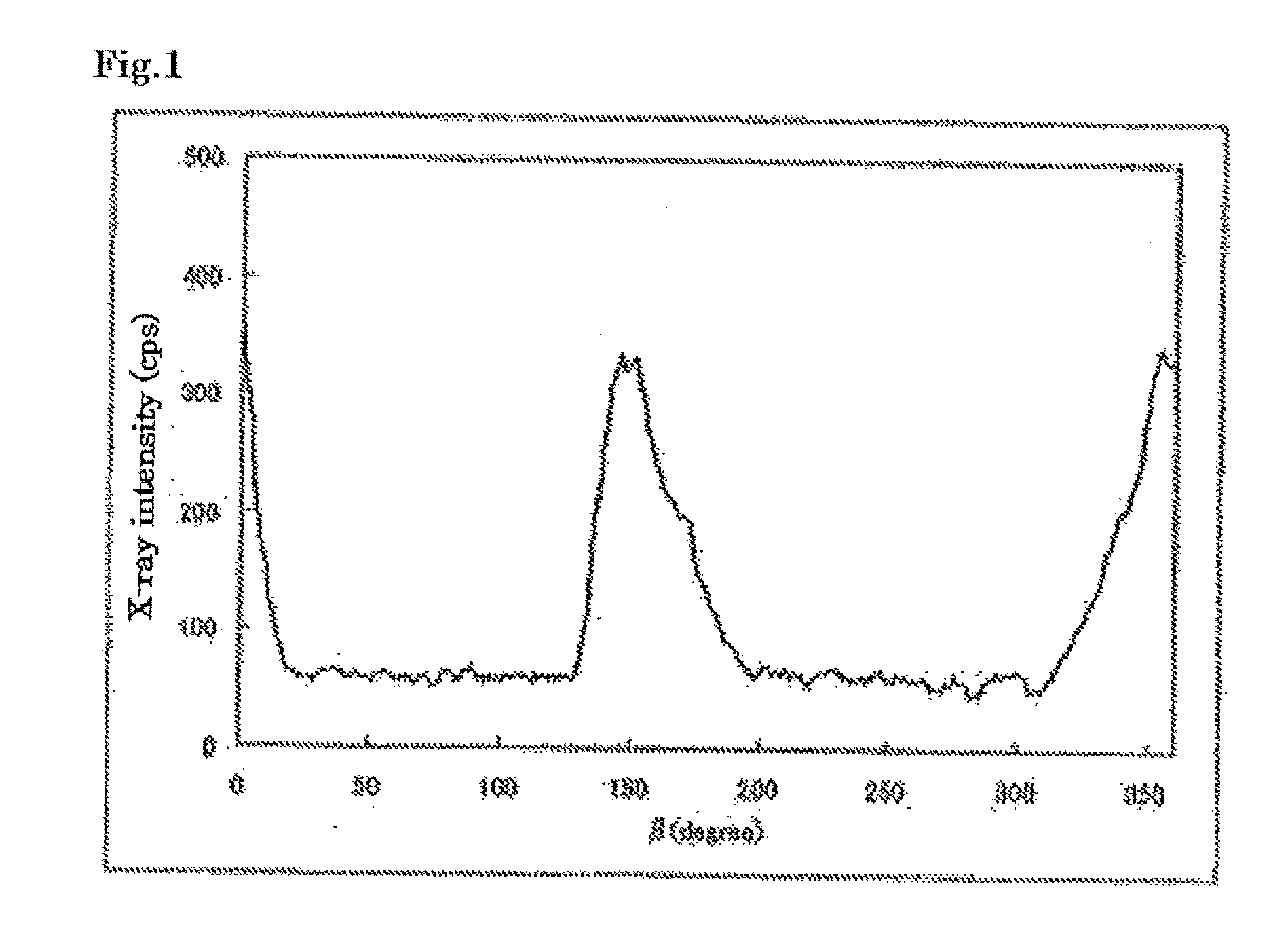Biaxially stretched polyamide resin film
a polyamide resin and biaxial stretching technology, applied in the direction of packaging foodstuffs, instruments, packaged goods, etc., can solve the problems of unbalanced film characteristics, fluctuation in mechanical strength, and many kinds of steps, and achieve good strength and appearance, good slipping property, and easy to mov
- Summary
- Abstract
- Description
- Claims
- Application Information
AI Technical Summary
Benefits of technology
Problems solved by technology
Method used
Image
Examples
example 1
[0183]After pellets of a nylon 6 resin (T-800, produced by Toyobo Co., Ltd.: relative viscosity RV=2.5, containing no lubricant) and pellets of a nylon 6 resin containing montmorillonite as a layered compound dispersed evenly therein (NF 3040, produced by Nanopolymer Composite Corp.; addition amount of the layered compound: 4% (inorganic material 2.6%)) were respectively vacuum-dried overnight at 100° C., they were blended at a weight ratio of 1 / 1. Next, the blended pellets were supplied to two extruders. After the pellets melted at 270° C. and the same kind resin was laminated by a static mixer having 16 elements at 275° C. and the laminate was extruded in a sheet-like form out of a T die heated at 270° C. to cooling rolls adjusted at 20° C. and then cooled and hardened to obtain an un-stretched multilayer sheet. The ratio of the discharge amounts of the two extruders was controlled to be 1:1. The thickness of the un-stretched sheet was 180 μm and the thickness of each layer in the...
examples 2 to 5 , example 7
Examples 2 to 5, Example 7, Comparative Examples 1, 2, and Comparative Examples 4 to 6
[0184]The samples were produced under the conditions described in Table 1. The film properties of Examples are shown in Table 1, and the film properties of Comparative Examples are shown in Table 2.
[0185]Example 3 and Comparative Example 1 were made to be monolayer without using a static mixer. In Examples 4 and 5, TD stretching was carried out after two-step MD stretching.
example 6
[0186]After pellets of nylon 6 resin containing montmorillonite as a layered compound dispersed evenly therein (NF 3040, produced by Nanopolymer Composite Corp.; addition amount of the layered compound: 4% (inorganic material 2.6%)) and organically treated montmorillonite powder (Cloisite 30B, produced by Southern Clay Products Inc.) were respectively vacuum-dried overnight at 100° C., they were blended at a weight ratio to give the addition amount of the inorganic layered compound of 8%. Thereafter, the blended pellets were supplied to two extruders and melted and mixed at 275° C. The obtained resin pellets were again dried in a vacuum drier at 100° C. for 24 hours. The resin was supplied to an extruder and melted at 275° C. and the same kind resin was laminated by a static mixer having 16 elements at 275° C. and the laminate was extruded in a sheet-like form out of a T die heated at 270° C. to cooling rolls adjusted at 20° C. and then cooled and hardened to obtain an un-stretched ...
PUM
| Property | Measurement | Unit |
|---|---|---|
| Temperature | aaaaa | aaaaa |
| Temperature | aaaaa | aaaaa |
| Temperature | aaaaa | aaaaa |
Abstract
Description
Claims
Application Information
 Login to View More
Login to View More - R&D
- Intellectual Property
- Life Sciences
- Materials
- Tech Scout
- Unparalleled Data Quality
- Higher Quality Content
- 60% Fewer Hallucinations
Browse by: Latest US Patents, China's latest patents, Technical Efficacy Thesaurus, Application Domain, Technology Topic, Popular Technical Reports.
© 2025 PatSnap. All rights reserved.Legal|Privacy policy|Modern Slavery Act Transparency Statement|Sitemap|About US| Contact US: help@patsnap.com

